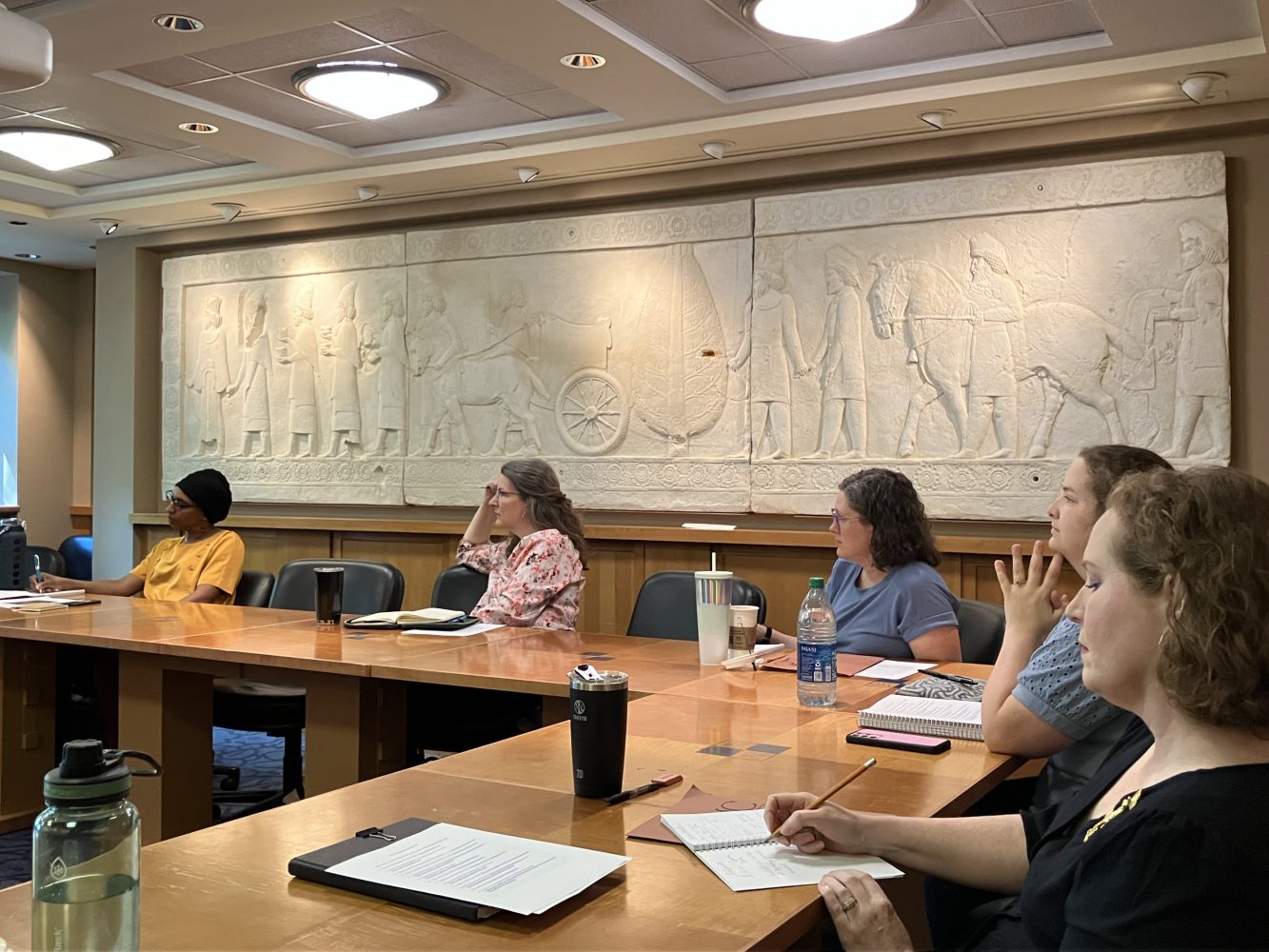 If there is any group of people who understand the joy of learning and making new connections, it’s teachers. So it was a treat for me to speak at the Carlos Museum’s summer Educator’s Summit. We had a mix of art teachers and history teachers attend and I spent the morning yesterday “nerding out” with my people. My goal was to highlight just how drenched we are in the symbols and stories of the ancient world and how they influence today’s artists, musicians, animators, cartoonists, film-makers, game creators, advertisers, playwrights, and so on.
If there is any group of people who understand the joy of learning and making new connections, it’s teachers. So it was a treat for me to speak at the Carlos Museum’s summer Educator’s Summit. We had a mix of art teachers and history teachers attend and I spent the morning yesterday “nerding out” with my people. My goal was to highlight just how drenched we are in the symbols and stories of the ancient world and how they influence today’s artists, musicians, animators, cartoonists, film-makers, game creators, advertisers, playwrights, and so on.
Any child who whines, “I don’t know what to draw,” or “I don’t know what to write,” need only look toward mythology for inspiration. After all that’s what superstar creators do: Set the story of the minotaur in a dystopian world? Hunger Games. Stumped as to what your main character should face in your block-bluster video game? Take the story to ancient Egypt a la Assassin’s Creed: Origins. Not sure what images to use to show your disdain of the industry? Think Greek Goddesses, like Lizzo in the pop video, Rumors. From Yugi -Oh! (Greek monsters) to Hozier singing about reproductive rights (Swan, Upon Leda); from John Wick movies (Sisyphus) to Broadway hits like Hadestown, the ancient myths and personalities continue to be an endless source of inspirations for creators.
One day after talking about how dependent high fashion designers are on ancient/classical inspired looks, I came across this image of Miley Cyrus wearing a beaded dress clearly inspired by the iconic bead dress from Ancient Egypt. 
We had one teacher who taught Georgia history so I made a special point to show how many of the state’s cities were inspired by the classical world, including Athens, Rome, Augusta, Smyrna, Damascus, Egypt, etc. And, of course, not to mention, Atlanta, which was named for Atalanta, the female hero of Greek mythology.
We had an interesting conversation about the early American habit of renaming enslaved people with classical names such as Caesar, Octavian, Cato, Cassius, etc. The use of the names were meant to both show off the plantation owner’s “learning,” while at the same time heinously mocking the powerlessness of their captives. Names such as Darius and Marcus, often passed down in families, are still in use today. So when Cassius Clay claimed he wasn’t going to use his “slave name” anymore and began to call himself, Mohammed Ali, he meant what he said literally!
We also talked about creative writing and drawing exercises the teachers could use with their students. I am very grateful to have had the opportunity to work with such creative and inspiring teachers. Thank you Kris Allen, Senior Manager of School and Volunteer Programs at the Carlos Museum, for inviting me to such a wonderful event!



Leave a Reply